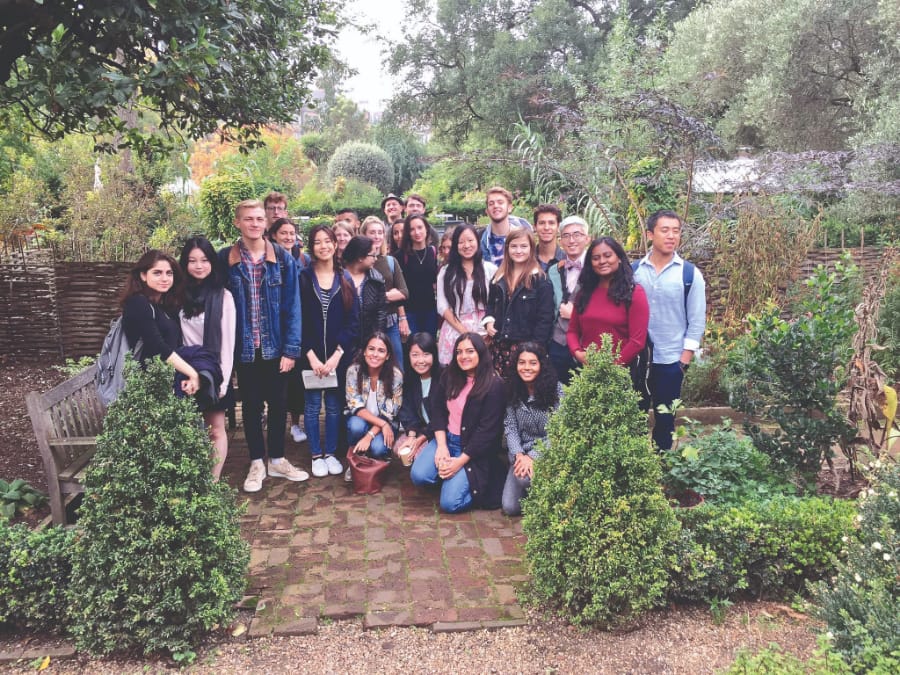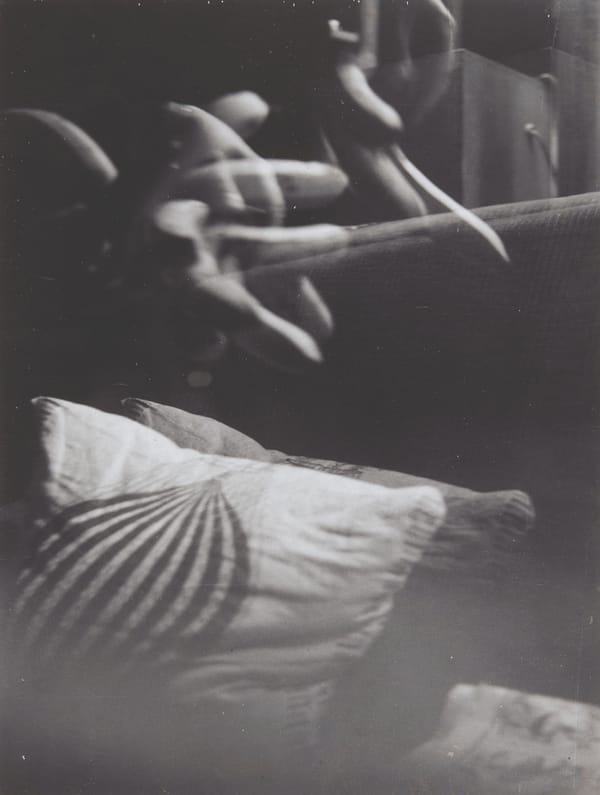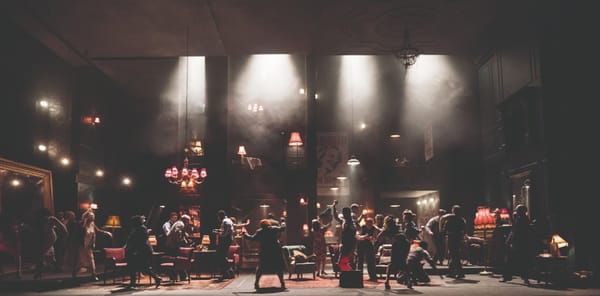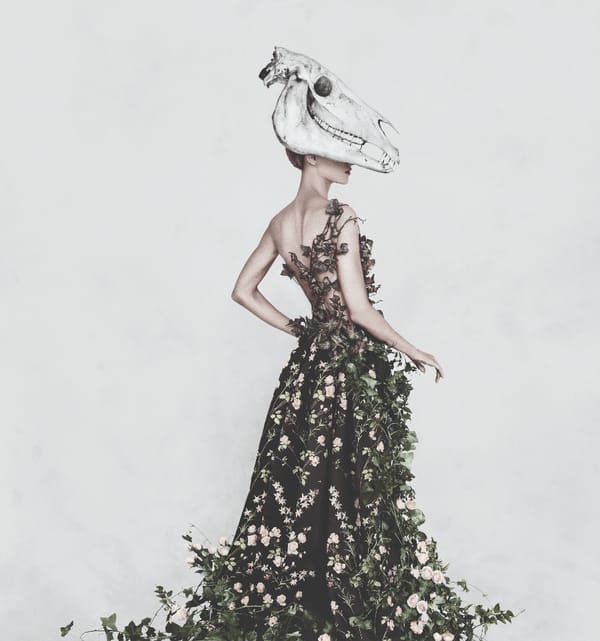Clash of Cultures: Giskin Day
Giskin Day is a Principal teaching fellow and course lead for the intercalated BSc in Medical Sciences with Humanities, Philosophy, and Law. She sat down with Felix’s Editor-in-Chief, Fred Fyles, to discuss her career, course, and the importance of creativity in science.

When I enter Giskin Day’s office, past the main entrance of the Centre for Languages, Culture, and Communication, on the third floor of Sherfield, it has been overrun with an array of padlocked backpacks. They’re being stored there in preparation of the Imperial Festival, which ran the weekend after I spoke to her, and for which she’d helped students to design an escape-room-in-a-bag challenge. Educational escape rooms, which help develop teamwork, communication, and lateral thinking, are just one example of how she brings a sense of creativity and excitement to Imperial. As one of the course leads for the newly-created intercalated BSc in Medical Sciences with Humanities, Philosophy, and Law, she’s more than qualified to talk about how to break down the barriers between art and science.
Fred: Can you tell us about the intercalated BSc you’ve been running this year?
Giskin: Medical Humanities is actually not new at Imperial; we’ve run a course for about 15 years, as part of a BSc. But this is the first year we’ve taken the plunge and offered a full intercalated BSc in Humanities, Philosophy, and Law. We’ve merged with another short course called Death, Autopsy, and Law and the course is wonderfully interdisciplinary. I think it differs from other types of intercalated BSc, in that ours is bespoke for our students. We’re not sending students off to ‘sit in on’ other courses the way they often do in other medical schools. We’ve really thought about what our students like to do – and what they need to do – and we’ve themed the course around that. So, we’ve had one module on the body, one on the mind, and one on death and dying, and then students have the choice to do a project for which there is an art component.
Throughout the course every week there is a field trip; we’ve been to lots of galleries, we’ve also been to the law courts, we’ve been to museums. We’ve worked in partnership with the Chelsea Physic Garden to learn about the history of pharmaceuticals, and we’ve had a lot of wonderful workshops with practising artists who are inspired by medicine and science. Students have had a chance to have a go at these various art-forms, like life drawing and sculpture, as well as learning about the medical contexts of the arts.
“The arts give you, first and foremost, the opportunity to learn to manage ambiguity”
F: And what’s the reaction been like from the students on the course?
G: Well, naturally, the students who choose our course do tend to think of themselves as being interdisciplinary and interested. But, I guess, it’s slight different now with intercalated BSc, because we’ve got students who are attracted to the philosophy component, or the law component, perhaps more than the art. Probably a greater proportion of them feel slightly like a fish out of water when it comes to art. But our mantra is: you don’t have to be artistic to do the course, it’s all about creativity and giving it a go; the process is far more important than the product.
F: What do you think the benefits are in engaging with the arts, particularly in scientific practice? What does it bring?
G: I like to use the analogy of Exhibition Road: it used to be a traditional road with the traffic going two ways and a small pavement, but of course now there’s a huge amount of uncertainty. They’ve removed the boundary between the pavement and the road and it feels like there’s a lot happening on there, bicycles, coaches and everything – huge amount of ambiguity. As a result, you’d think it would be dangerous, but actually it makes it safer. People have to communicate their intentions. The traffic slows down and drivers are more attentive because unpredictable things happen. What science often gives the impression of doing is beating the uncertainty out of things, but unless you can handle uncertainty, you’re in real trouble, especially if you’re going to practise as a doctor. The arts have never that reputation: they have always been ambiguous. There’s famously no one right answer. I think engaging in the arts is like walking down Exhibition Road: you’ve got to communicate, you’ve got to make eye contact, you’ve got to make reasoned judgements. These are all good skills in medicine.
When you’re working in real life, you rarely have all the data to hand, there’s rarely one right answer. So the BSc is a wonderful safe space of experimenting with the idea of there not always being one right answer and how you still defend an interpretation through lots of different types of evidence. I think it’s hugely valuable for our students to do that.
F: Another thing you’re involved with is the Science Communication Horizons module. I think a lot of people at Imperial maybe don’t necessarily see it this way, but no matter what kind of career you go into, you’re going to need the skills to explain what you’re doing, and I think it is incredibly important for their careers.
G: I couldn’t agree more. It’s quite a tricky skill: when you write for different audiences it’s not about dumbing down, it is really about pitching yourself and your material in a slightly different way. And it is invaluable. I think those kinds of skills are becoming ever more important in a digital world. It’s important not just to be able to communicate technical information to others in your field, but to think about different audiences. And today, we’re talking before the Imperial Festival takes place, which is a wonderful chance for scientists to leave the labs and the ivory tower and engage with real people who are interested in their work.

F: Do you also think that humanities and arts students should study some science? Can that help their practice as well?
G: I think we often view the arts and sciences as two incommensurate paradigms, when actually, there’s a lot of overlap. They can both be analytical, they can both be emotional, and they both have elements of subjectivity as well as objectivity. So actually, there’s not a great difference between them, but just for the purposes of academia, we do tend to divide them up. Artists are hugely inspired by science and medicine. Go to any art gallery and you’ll find works that have been really inspired by science and the weight of knowledge. I think that we could all do with being curious about everything, and not pigeon hole ourselves as ‘sciencey’ or ‘arty’. We should be embracing both. They complement each other.
F: I know I’ve spoken to quite a few people who, when I talk to them about the Horizons programme they say, “that’s not really related to what I’m doing”. Do you think that kind of distinction between art and science is what is creating a barrier of people getting involved?
G: Without a doubt. I think it starts very early on in school, where if you’re going to do the science route you’re obliged to take a certain set of subjects. There is definitely this two-tier system, where it’s generally thought that those good at maths go into the sciences and those that are not take the humanities, which is a great shame.
Paradoxically, by the time students get to university, the arts feel too challenging somehow.. But I think that is a side effect of being part of an institution in which the rhetoric of excellence sometimes interferes with the permission to experiment and permission to try things out. That’s what I think the arts are so useful: you can be experimental. The Horizons programme allows students to expand their boundaries and their ways of thinking. It’s a fantastic opportunity for all undergraduate students to engage with subjects that make them well-rounded individuals.They can then graduate with an education rather than with just a degree.
“I think we could all do with being curious about everything, and not piegeon hole ourselves as ‘sciencey’ or ‘arty’”
F: Taking things back a little, could you tell us a little about your career and your journey and how you ended up here today?
G: It’s slightly unconventional. I think I too felt the pressure to go into the sciences where I was more inclined to humanities. I did my first degree in botany and biochemistry. I loved botany – I don’t know why I was doing biochemistry! But I always had a feeling that I wasn’t going to be a lab scientist. I did want to go into publishing and editing, and I was lucky enough to get a job with Blackwell Science working on medical journals. And then I landed a dream job at the Science Museum, working as the publications officer. I really enjoyed it, I loved being at the museum. At the same time I was doing the MSc here at Imperial in Science Communication and at that time I was starting a family, so when Imperial offered me a part-time job teaching I jumped at that. And then a few years in I was offered a chance to devise a proposal for a medical humanities course.
I remember it incredibly clearly, as being a moment of being very torn. I didn’t think the medical school would be interested in an arts-based BSc. I very nearly just turned it down straight away. But then I asked a few more questions and found out the medical school was totally on-board with this, and have been very supportive ever since. The minute I got involved in medical humanities I realised that this was my thing. My work has always had some kind of medical angle. When I was doing botany I was studying medicinal bark, at Blackwells I worked on medical journals, and then when I was at the Science Museum I was working on the guidebooks for the health matters gallery. It felt perfectly suited to my interests, and I’ve loved it ever since. I think Medical Humanities is a fantastic discipline. Writers and artists have such rich perspectives to offer to medical practice -- I’ve so enjoyed teaching it. I feel very lucky to have the opportunity to teach in a subject about which I feel passionate.
F: Within your past career you’ve had a lot of different roles. Do you think having that many different elements to your past career helps you today in what you do?
G: I think it definitely does. I should practise what I preach, and what I preach is that interdisciplinarity and creativity are wonderful. So I really think my past career has pushed me to be innovative and creative. I’m not a particularly arty person, but I think my creativity manifests itself in playful learning activities: I like designing games to incorporate in my teaching. I think if you’re an engaged practitioner then you are curious about the world and you try to take in as much as you can and incorporate that into what you know and what you can pass on. That is the fantastic thing about teaching is that it’s also lifelong learning. And I learn so much from the students as well. Being a non-medic teaching medics, the students have a chance to practise their communication skills. They’re telling me about what they know and what they think. So that’s one of the real pleasures of the job: I’m always learning from students.









